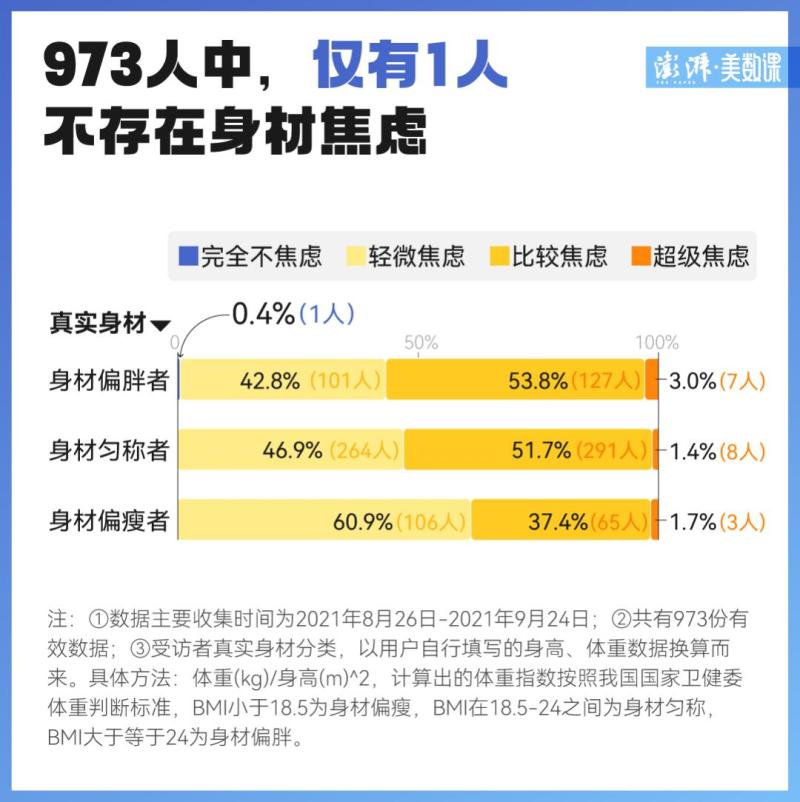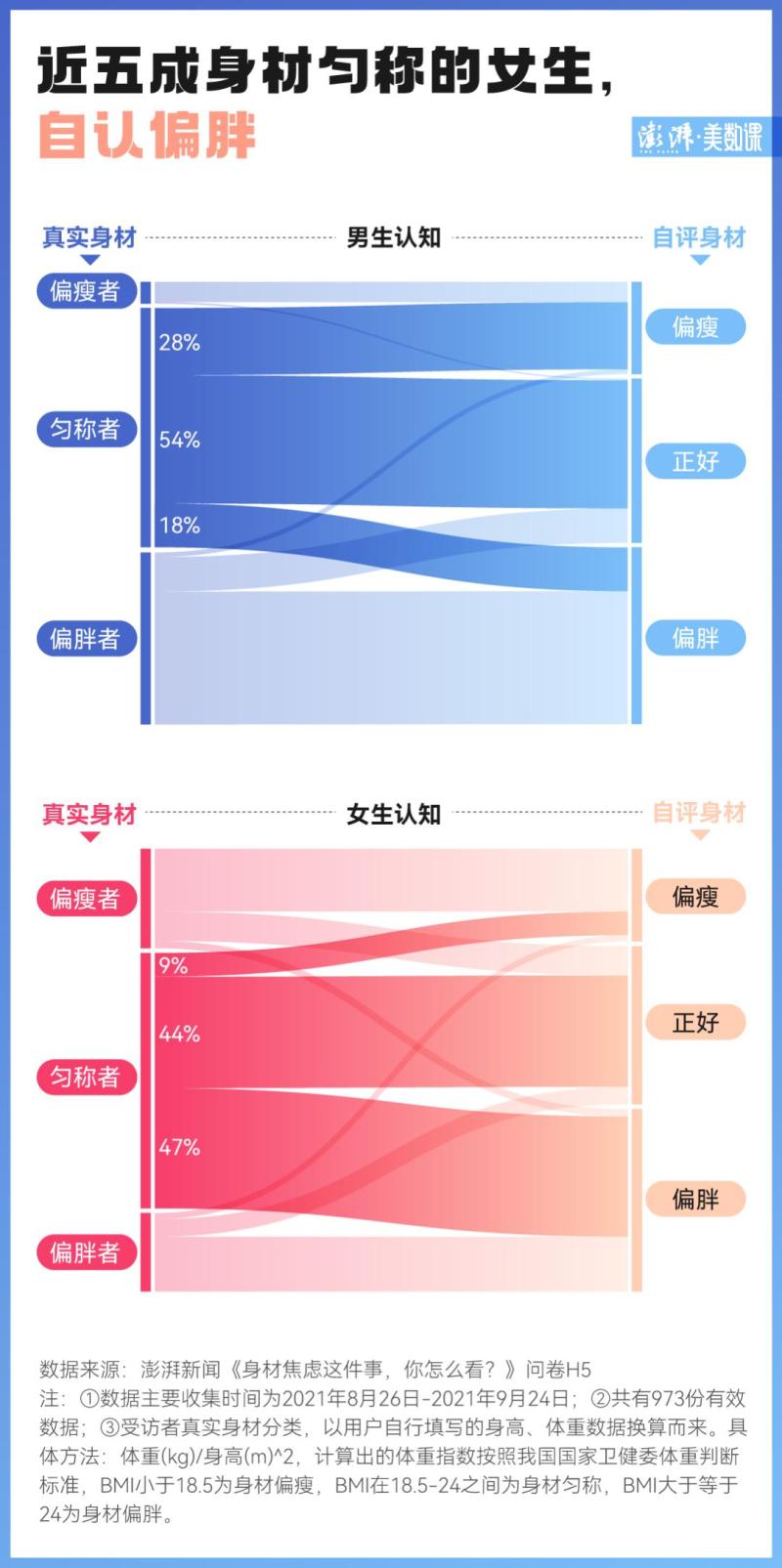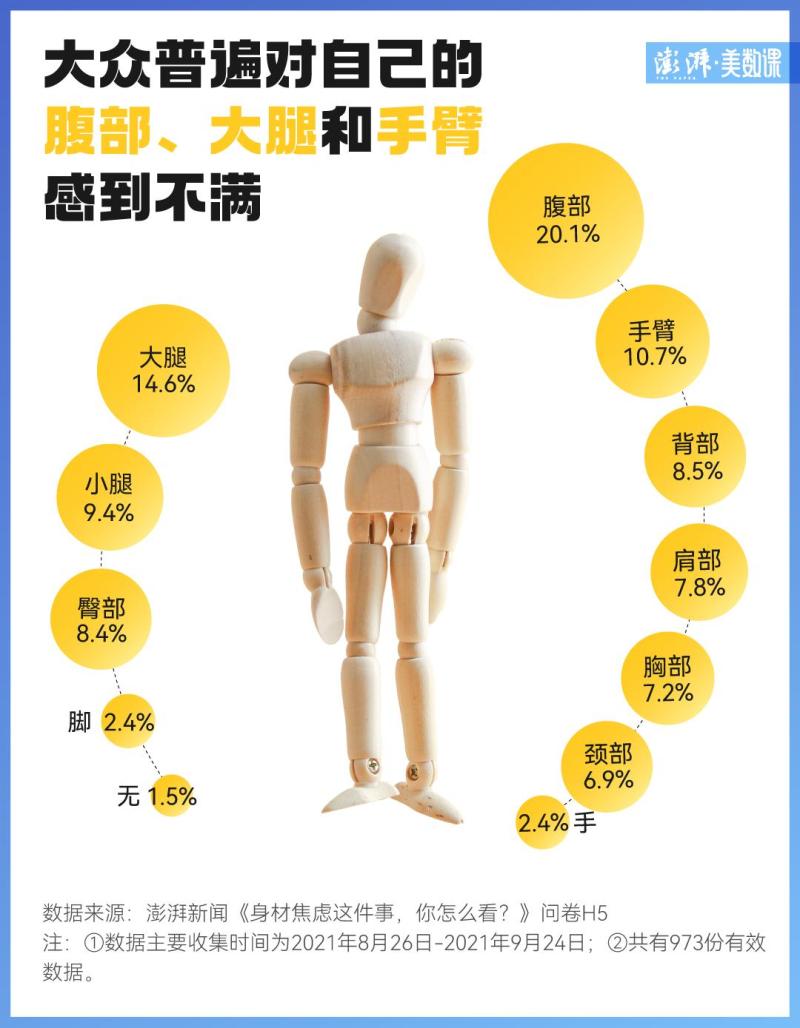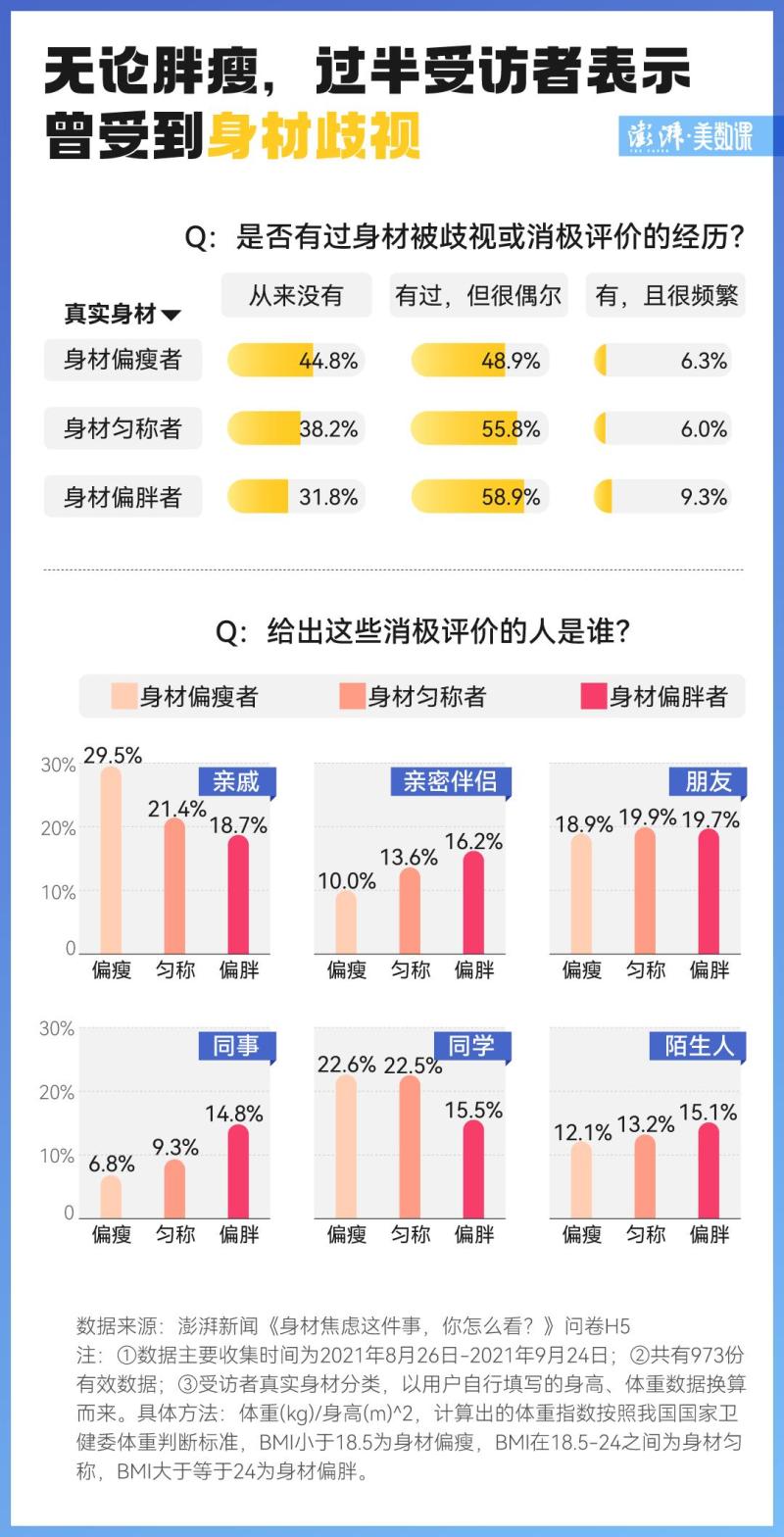Today (11th) is World Obesity Prevention Day. At present, obesity has become one of the most serious public health problems in the world. The latest Global Obesity Map 2023 released by the World Obesity Association shows that by 2035, more than 4 billion people in the world will be obese or overweight, accounting for 51% of the global population.
Do you feel anxious about your figure?
According to a questionnaire survey in The Paper,Of the 973 valid answers, only one person answered "not anxious at all".Although he is 173 cm tall and weighs 75 kg according to National Health Commission’s standards, he is overweight.
We calculate the sum of the scores given to different options by the respondents during the answering process, and calculate their respective body anxiety levels.
Most of the remaining 972 people are in mild anxiety and comparative anxiety. With the increase of weight, they are more anxious about their figure.

Compared with boys,
Girls are more likely to think they are fat.
BMI, body mass index, is equal to weight divided by the square of height. This concept is used by government agencies in many countries as an evaluation standard for obesity and health status.
According to the standard of China National Health Commission in 2013, the normal range of adult BMI index is 18.5~23.9. During physical examination, people are often rated as obese, overweight, healthy and light.
However, there are many gaps between this set of standards and people’s ideas.
We converted the BMI index according to the height and weight data filled in by the interviewees themselves, and then compared it with the answers of each interviewee’s self-evaluation questions, and there were many dislocations in the middle.

According to statistics, a post-90s girl who is 162cm tall and weighs only 84kg is in a thin state, whether by National Health Commission’s judgment standard or by the public’s judgment standard of "weight is not more than 100". But when we ask, "What do you think of your figure in the eyes of most people?" At that time, her self-evaluation was overweight.
This kind of cognitive contrast is particularly prominent in the well-proportioned people. Nearly 40% of the well-proportioned people feel that they are slightly obese in the eyes of others.
Further observing the comparison between men and women,There are 47% symmetrical girls who think they are fat, while only 18% symmetrical men think they are still a little fat.
Tall, fat and thin,
Each has its own physical problems.
The waist, legs and arms are the most disturbing parts in the respondents’ self-evaluation.

When it comes to people with different body types, the body parts they want to adjust are slightly different. Thin people are more dissatisfied with their chests and shoulders, while overweight people want to change their "crouching" state.
As for people who are obviously neither fat nor thin, they are harsh on their arms, abdomen and thighs.
Gaze in daily life,
Precipitated out body anxiety.
In our survey, more than half of the respondents said that they had had the experience of being discriminated against.

With the overweight of their bodies, they suffer more and more negative comments, more and more frequently. According to statistics, compared with those who are thin, the probability of a overweight person facing body humiliation in daily life has increased by 13%.
Not only that,These body humiliation injuries may be more from the closest people around them.Unintentional remarks from relatives, close partners, friends, classmates, etc. may hurt them invisibly.
Thin people are more likely to be "cared for" by relatives, while overweight people will not only suffer more humiliation from intimate partners, but also bear more criticism from strangers.
What is the standard of beauty? Are cartoon legs, butterfly backs, right-angled shoulders, A4 waist, peach hips, etc. really the only ones that define everyone’s figure?
Perhaps, we need to think more and increase respect and tolerance for ourselves and others.
关于作者